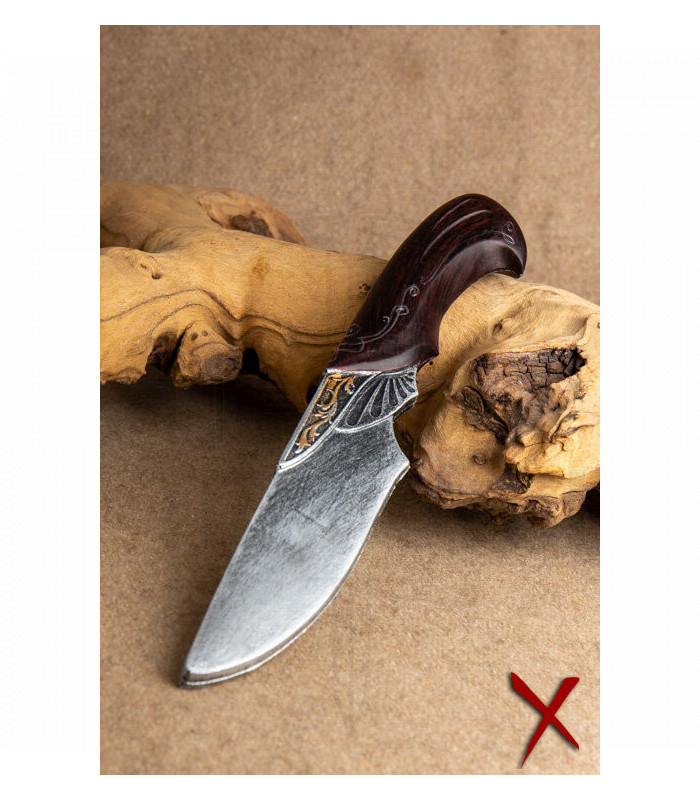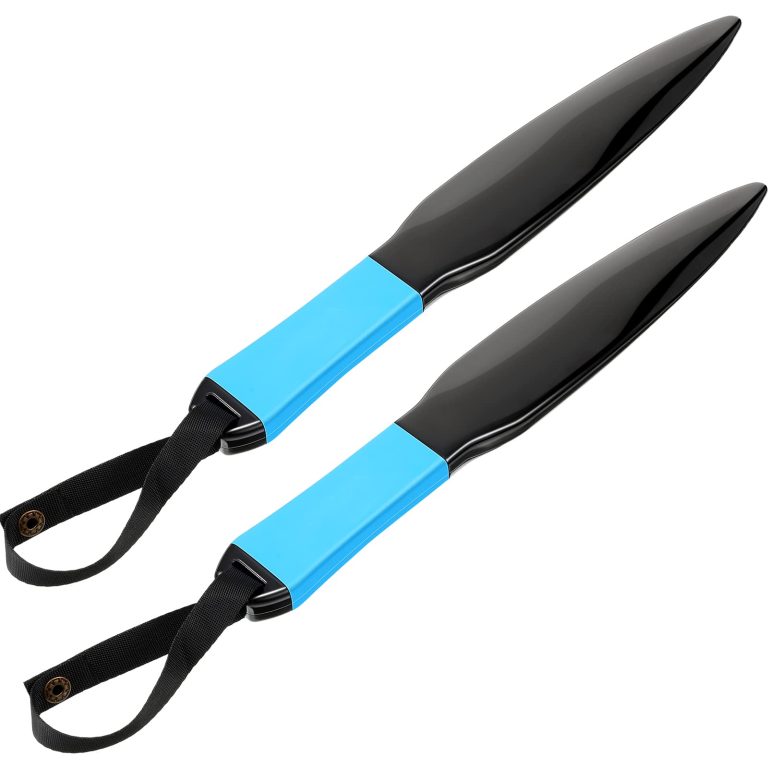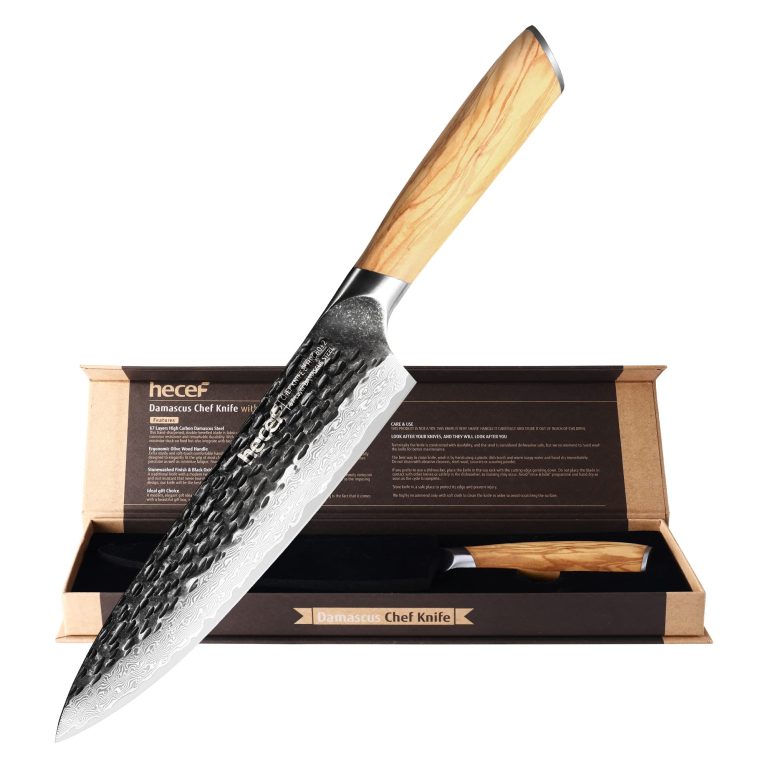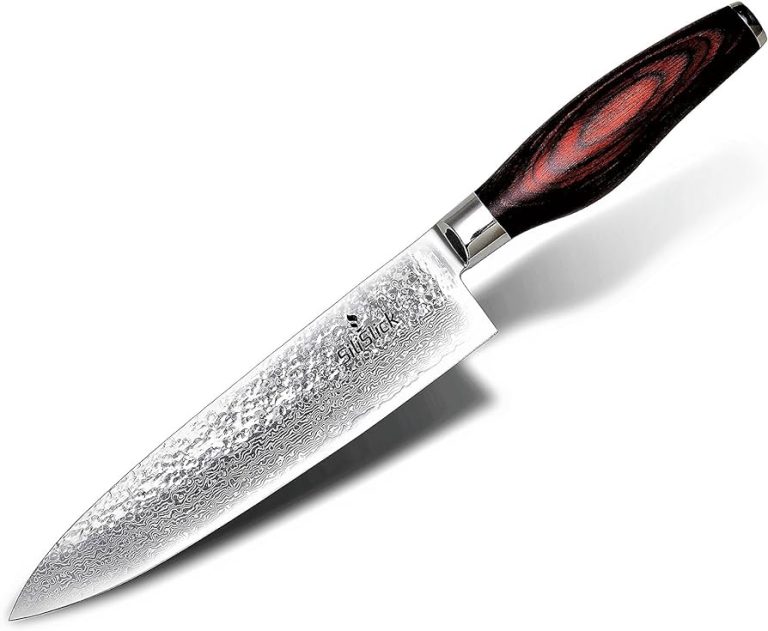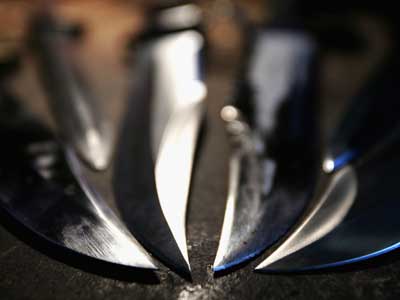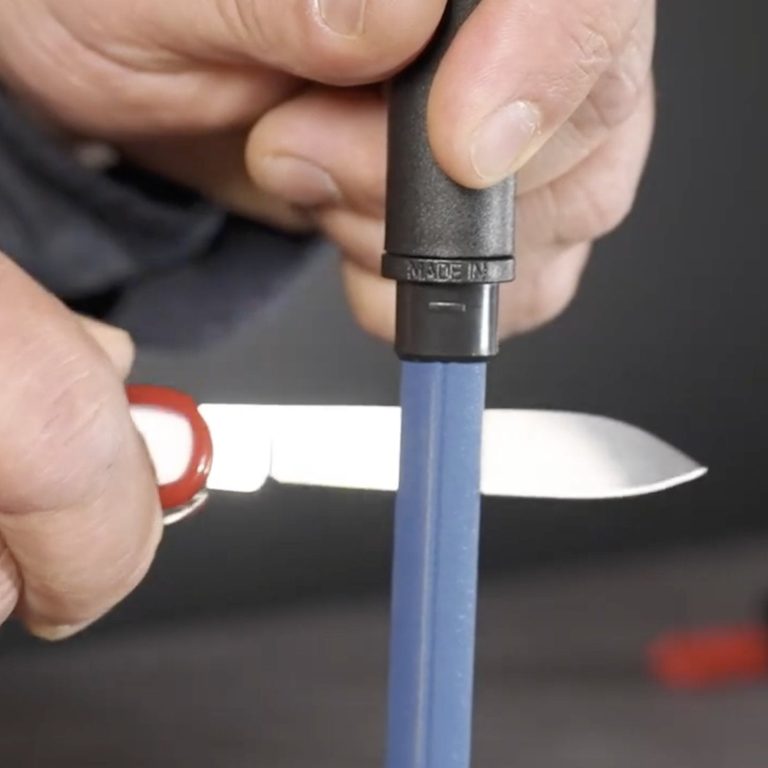What is Strongest Tactical Knife?
The strongest tactical knife is one that features a high-quality steel blade and a durable and reliable design. This knife can withstand heavy use and is capable of handling various tasks in challenging environments.
Whether you need it for survival situations, outdoor adventures, or self-defense, a strong tactical knife will provide you with the toughness and functionality you require. With its robust construction and cutting-edge materials, this knife ensures superior performance and long-lasting durability, making it a reliable tool for any tactical situation.
So, when choosing a tactical knife, prioritize strength and resilience to ensure it can handle whatever comes your way.

Credit: everydaycarry.com
The Evolution Of Tactical Knives
The strongest tactical knife has evolved over time, showcasing superior durability and functionality. Its advanced design offers unparalleled strength and precision for various applications, making it an essential tool for professionals and enthusiasts alike.
Tactical knives have come a long way in terms of design and functionality. From their humble beginnings as basic cutting tools, they have evolved into highly sophisticated instruments that offer exceptional performance in various situations. In this section, we will explore the importance of tactical knives in different scenarios and provide a clear definition of what makes a knife truly tactical.
Importance Of Tactical Knives In Various Situations:
- Combat: Tactical knives play a crucial role in military operations and close-quarter combat. They are designed to withstand rigorous conditions and deliver swift, powerful strikes. With their resilient blades and ergonomic handles, these knives provide soldiers with a reliable and versatile tool that can be easily accessed in critical moments.
- Survival: When venturing into the wilderness, a tactical knife can be a lifeline. Its robust construction and sharp blade allow for a multitude of tasks such as building shelter, preparing food, or even defending against predators. Whether it’s cutting through thick vegetation or creating fire-starting tinder, a tactical knife is an essential companion in survival situations.
- Everyday Carry (EDC): Tactical knives are not solely reserved for extreme scenarios; they also serve as reliable tools for everyday tasks. With their compact size and multifunctional features, EDC knives can assist with opening boxes, cutting ropes, or even helping in emergency situations. Lightweight and portable, they are convenient to carry and can be easily deployed when needed.
Definition Of A Tactical Knife:
A tactical knife can be defined as a purpose-built, high-performance cutting tool that is designed for specific tactical and practical applications. These knives are characterized by the following features:
- Blade Material: Tactical knives often feature blades made from high-quality stainless steel or carbon steel, providing excellent durability, sharpness, and corrosion resistance.
- Blade Design: The blade design of a tactical knife may vary depending on its intended use. Common styles include tanto, drop point, and spear point, each offering different advantages in terms of piercing ability, cutting power, or overall versatility.
- Ergonomics: Tactical knives are ergonomically designed to provide a secure and comfortable grip, allowing for precise handling and minimizing the risk of slippage even in challenging situations.
- Deployment Mechanism: Many tactical knives incorporate advanced deployment mechanisms such as assisted opening or automatic opening for quick and easy blade deployment, ensuring swift response times when needed.
- Additional Features: Some tactical knives include additional features like serrated edges, glass breakers, and pocket clips, enhancing their utility and versatility in different scenarios.
Understanding the evolution of tactical knives and their importance in various situations helps us appreciate the craftsmanship and engineering behind these exceptional tools. Whether it’s for combat, survival, or everyday use, tactical knives continue to evolve to meet the demands of those seeking reliability, durability, and effectiveness in their cutting-edge tools.
Key Features Of A Strong Tactical Knife
A strong tactical knife boasts key features such as high-quality construction, a durable blade, and a secure grip for tactical operations. This type of knife offers reliability and versatility for various survival and self-defense situations.
Exceptional Strength And Durability
- A strong tactical knife should possess exceptional strength and durability to withstand the toughest tasks and harsh environments.
- Reinforced construction and high-quality materials contribute to its robustness and long-lasting performance.
- The blade, handle, and overall design are engineered to ensure the knife can handle heavy-duty use without compromising its structural integrity.
- Exceptional strength and durability allow the knife to tackle demanding situations, making it a reliable companion for various tactical applications.
Blade Material And Design
- The choice of blade material greatly influences the strength and functionality of a tactical knife.
- High-quality steel alloys, such as stainless steel or carbon steel, are commonly used, offering excellent strength, corrosion resistance, and edge retention.
- Different blade designs, such as tanto, drop point, or clip point, serve specific purposes, providing versatility to meet various cutting needs.
- A well-designed blade with optimal thickness, proper tang, and a reliable locking mechanism enhances the knife’s overall performance and safety during use.
Ergonomic Handle For Optimum Grip
- An ergonomic handle is a crucial feature of a strong tactical knife, providing a comfortable and secure grip.
- The handle design should allow for a firm hold, reducing the risk of slippage, especially in wet or sweaty conditions.
- Textured scales or patterns on the handle enhance grip, ensuring precise control and preventing accidental injury.
- Some tactical knives incorporate finger grooves or choils, further improving handling and reducing hand fatigue during prolonged use.
- Whether made from synthetic materials like G10 or natural materials like wood, the handle should be durable, resistant to wear, and provide the user with confidence and stability.
By focusing on exceptional strength and durability, blade material and design, and an ergonomic handle for optimum grip, a strong tactical knife becomes a reliable tool to accomplish various tasks effectively. With the right combination of features, these knives stand out as dependable companions in challenging situations requiring precision, durability, and safety.
Steel Blades: The Foundation Of Strength
Discover the epitome of strength with steel blades – the essential component of the strongest tactical knife. Unleash power and durability with these foundation of strength.
Steel blades are the heart of any tactical knife, providing the strength and durability necessary for various tasks. But not all steel alloys are created equal. Let’s explore the different types of steel and their strengths.
Strength Of Different Steel Alloys:
- Stainless steel: Known for its corrosion resistance, stainless steel blades are durable and require minimal maintenance.
- High-carbon steel: With a higher carbon content, these blades offer exceptional strength and edge retention.
- Tool steel: Ideal for heavy-duty applications, tool steel blades are tough and able to withstand intense pressure.
- Damascus steel: Renowned for its exquisite appearance, Damascus steel combines multiple layers of different steel alloys, resulting in a blade that is not only visually stunning but also incredibly strong.
Benefits Of High-Carbon Steel Blades:
- Superior strength: High-carbon steel blades are renowned for their exceptional strength, making them perfect for demanding tasks that require durability and resilience.
- Excellent edge retention: These blades hold their sharpness for extended periods, allowing users to perform tasks with precision and ease.
- Resistant to wear and tear: High-carbon steel blades are less likely to chip or deform, ensuring a longer lifespan compared to other steel alloys.
- Versatility: Whether it’s survival situations, heavy-duty cutting, or general use, high-carbon steel blades excel in a wide range of applications.
Damascus Steel Blades: Combining Strength And Aesthetic Appeal
Damascus steel blades are unique in their composition, blending strength and beauty into a single blade. Here’s what makes them stand out:
- Exceptional strength: Damascus steel blades offer the same strength as high-carbon steel blades, thanks to their composite structure.
- Unique patterns: The distinctive water-like patterns on Damascus steel blades make each one truly one-of-a-kind, adding an aesthetic appeal that many knife enthusiasts appreciate.
- Sharpness retention: Similar to high-carbon steel blades, Damascus steel blades retain their sharpness exceptionally well, making them reliable tools in various scenarios.
- Rust resistance: While not completely immune to corrosion, Damascus steel blades often include stainless steel layers, enhancing their resistance to rust compared to other steel alloys.
The strength of a tactical knife lies in its steel blade. Whether it’s the exceptional strength of high-carbon steel or the unique combination of strength and aesthetics in Damascus steel, choosing the right steel alloy ensures a reliable and robust tool for any task.
Blade Design: Enhancing Functionality And Performance
‘Blade Design: Enhancing Functionality and Performance’ explores the strongest tactical knife available, delving into how different blade designs improve functionality and performance. Discover the key features to look for when searching for the ultimate tactical knife.
The design of the blade is a crucial factor in determining the functionality and performance of a tactical knife. Whether you opt for a serrated or straight-edge blade or consider the importance of thickness and shape, understanding these elements can significantly impact the knife’s effectiveness in various situations.
Here, we delve into the details of blade design, exploring the pros and cons of different options.
Serrated Vs. Straight-Edge Blades:
- Serrated blades:
- Ideal for cutting through tough materials such as ropes, straps, and fibrous materials.
- Teeth-like serrations provide better grip and help prevent slipping while cutting.
- Offers a saw-like motion for efficient cutting of sturdy objects.
- Not suitable for precision cutting or tasks requiring clean, smooth cuts.
- Straight-edge blades:
- Versatile and suitable for a wide range of cutting tasks.
- Provides precise and clean cuts, making it more suitable for everyday tasks.
- Easier to sharpen compared to serrated blades, allowing for improved maintenance.
- May be less effective when cutting through tough, fibrous materials.
Importance Of Blade Thickness And Shape:
- Blade thickness:
- Thicker blades are generally more robust and can withstand heavier use.
- Ideal for tasks that require strength and durability, such as batoning or prying.
- Thinner blades offer increased precision and are suitable for tasks that require finesse.
- Consider the intended use and personal preference when choosing blade thickness.
- Blade shape:
- Drop point: Commonly used in tactical knives, offers a strong and versatile blade shape.
- Tanto: Exhibits exceptional strength and piercing capabilities, making it ideal for tactical use.
- Clip point: Sharp and precise, suitable for more delicate cutting tasks.
- Consider the intended purpose of the knife when selecting the blade shape.
Partially Serrated Blades: The Best Of Both Worlds
- Combining the benefits of both serrated and straight-edge blades, partially serrated blades offer a versatile solution.
- Provides the option of using the straight edge for clean cuts and the serrated section for tasks that require added cutting power.
- Ideal for multi-purpose use, allowing the knife to adapt to different cutting needs.
- Offers flexibility and convenience in various situations, making it a popular choice among tactical knife enthusiasts.
When considering the blade design of a tactical knife, factors such as serrated vs. Straight-edge blades, blade thickness, and shape play a significant role in determining functionality and performance. Understanding the strengths and weaknesses of each option allows you to make an informed decision based on your specific needs and preferences.
Whether you prioritize versatility, precision, or cutting power, choosing the right blade design enhances the effectiveness of your tactical knife.
Handle Design: Ensuring Control And Comfort
Ensuring control and comfort, the handle design of the strongest tactical knife guarantees a secure and ergonomic grip. Experience enhanced handling for superior performance in any situation.
A strong tactical knife is not just defined by its blade, but also by its handle design. The handle plays a crucial role in providing control and comfort during use. Whether you’re a military personnel, outdoor enthusiast, or simply someone looking for a reliable tool, considering the ergonomics and material of the handle is essential.
Let’s dive into the key elements that make a handle design effective:
Grippy Handle Materials:
- Textured G10: G10 is a high-pressure fiberglass laminate renowned for its durability and excellent grip. Its textured surface offers a secure hold even in wet or slippery conditions.
- Micarta: Made from layers of linen or paper soaked in resin, Micarta is another popular material known for its superior grip. It provides a firm grasp and offers added resistance to moisture and chemicals.
- Rubberized coatings: Some handles feature a rubberized coating that enhances grip and prevents slippage. This type of material is particularly useful when dealing with tasks that require a solid hold.
Ergonomic Handle Shapes For Enhanced Control:
- Contoured handles: Tactical knives often feature handles with ergonomic contours that conform to the natural shape of the hand. These contours ensure a comfortable and secure grip, minimizing fatigue during prolonged use.
- Finger grooves: Finger grooves along the handle provide additional control and stability. They help in establishing a firm grip and prevent the knife from slipping out of your hand.
- Extended pommels or tangs: A handle design that incorporates an extended pommel or tang allows the user to place their thumb or index finger on the handle’s end. This adds control and stability during intricate tasks requiring precision.
Textured Handle Surfaces For A Secure Grip:
- Checkered patterns: Handles with checkered or serrated patterns offer an enhanced grip. These textured surfaces increase friction, optimizing control even in challenging environments.
- Scallop-shaped indentations: Some handle designs incorporate scallop-shaped indentations for improved grip. These small grooves offer added traction and prevent the knife from slipping during intense cutting or survival situations.
- Jimping: Jimping refers to small notches or ridges found on the spine of the blade, but they can also be present on the handle. Jimping on the handle provides an additional gripping surface, giving you better control over the knife’s cutting action.
The handle design of a tactical knife should never be overlooked. Grippy handle materials, ergonomic shapes, and textured surfaces are all essential considerations for ensuring control and comfort during use. Choosing a knife with a well-designed handle will not only enhance your performance but also provide a safer and more enjoyable user experience.
Testing Methods For Determining Strength
Determining the strength of a tactical knife involves testing methods that assess its durability and reliability in challenging situations. These methods enable us to pinpoint the strongest tactical knife available, ensuring its effectiveness in any task or situation.
When it comes to finding the strongest tactical knife, testing methods play a crucial role in determining its strength and durability. Here, we will explore the various testing methods used to evaluate blade strength, handle strength, and overall durability. Let’s delve into the details and uncover the secrets behind these tests!
Blade Strength Tests: Rockwell Hardness Scale And Impact Tests
Blade strength is of utmost importance when it comes to tactical knives. Two primary tests are commonly used to assess the strength of the blade:
- Rockwell Hardness Scale: This test measures the hardness of the blade material by indenting it with a diamond cone or hardened steel ball. The blade’s Rockwell hardness determines its ability to resist deformation and retain its sharpness over time.
- Impact Tests: These tests evaluate the blade’s ability to withstand impact forces without breaking or chipping. The blades are subjected to controlled impacts using various methods, including drop tests and striking tests.
Handle Strength Tests: Weight-Bearing And Torsion Tests
A strong and reliable handle is vital for a tactical knife. To ensure optimum handle strength, manufacturers conduct the following tests:
- Weight-Bearing Tests: By applying a specific load to the handle, the weight-bearing test assesses its capacity to withstand the pressure exerted during use. It helps determine if the handle can support the force applied during tasks such as cutting or prying.
- Torsion Tests: These tests evaluate the handle’s resistance to twisting forces. The handle is subjected to torsional stress to simulate real-life scenarios where users exert torque on the knife. A sturdy handle will hold up well under these tests, reducing the risk of breakage or deformation.
Durability Tests: Resistance To Corrosion, Wear, And Impact
Apart from testing blade and handle strength, durability tests focus on a knife’s ability to withstand various environmental factors and prolonged use. Here are the key durability tests:
- Resistance to Corrosion: Blades are exposed to corrosive substances like saltwater or acidic solutions. This test assesses the knife’s resistance to corrosion, ensuring it remains functional and rust-free even in harsh conditions.
- Resistance to Wear: Durability also depends on the blade’s resistance to wear. Testing methods such as rubbing or scraping evaluate how well the blade holds up over time, maintaining its sharpness and integrity.
- Impact Resistance: Tactical knives may encounter sudden impacts during use. Impact resistance tests simulate such situations to assess the blade’s ability to endure high-force impacts without breaking or becoming damaged.
By utilizing these testing methods, manufacturers can determine the strength and durability of a tactical knife. These tests ensure that the knife can withstand the rigors of demanding tasks and provide users with a reliable tool for their ventures. So, when choosing a tactical knife, considering its performance in these tests can help make an informed decision about its overall strength and durability.
Smith & Wesson Swmp4Ls M&P
The Smith & Wesson SWMP4LS M&P is a powerful and robust tactical knife that stands out as one of the strongest options available. With its durable construction and versatile features, it is a reliable tool for demanding situations.
The is renowned for its durability and tactical features, making it one of the strongest tactical knives available on the market. Let’s delve into its impressive qualities:
Blade Material And Design:
- Crafted from high carbon stainless steel, the blade of the SWMP4LS M&P ensures exceptional strength and longevity. It boasts excellent edge retention and resists corrosion, allowing for reliable performance in various conditions.
- The partially serrated drop point blade exhibits versatility, making it suitable for a wide range of tasks. From cutting through tough materials to performing intricate tasks, this tactical knife delivers reliable performance in diverse scenarios.
Handle Ergonomics And Durability:
- The SWMP4LS M&P features a robust aluminum handle that offers both comfort and durability. The ergonomic design ensures a secure grip during intensive tasks, preventing slippage and enhancing user control.
- The handle’s textured surface provides additional stability, even in challenging environments. Whether it’s wet, icy, or sweaty, this tactical knife remains steadfast in your hand, ensuring your safety and efficiency.
Locking Mechanism And Additional Features:
- Equipped with an advanced assisted opening mechanism, the SWMP4LS M&P allows for quick, one-handed deployment. The finger actuator ensures swift access to the blade, particularly crucial in high-pressure situations.
- This tactical knife incorporates the reliable and widely acclaimed liner lock system. The liner lock securely holds the blade in place during use, preventing accidental closure and ensuring your safety.
- The SWMP4LS M&P further includes a convenient and practical built-in glass breaker, providing an added layer of utility in emergency situations. This feature makes it an excellent choice not only for tactical purposes but also for everyday carry needs.
The Smith & Wesson SWMP4LS M&P stands out as a top-tier tactical knife. Its high-quality blade, ergonomic handle, dependable locking mechanism, and additional features make it an exceptional tool for a variety of tasks. Whether you’re a law enforcement professional, an outdoor enthusiast, or someone in search of a reliable everyday carry knife, the SWMP4LS M&P won’t disappoint.
Benchmade Griptilian
Looking for the strongest tactical knife? The Benchmade Griptilian is a top choice, combining durability and functionality for any situation. Its strong construction and versatile design make it a reliable tool for tactical use.
Blade Material And Design
- The boasts an impressive blade crafted from high-quality stainless steel.
- The blade is known for its exceptional strength, durability, and resistance to corrosion.
- With a sharp and versatile drop-point blade design, the Griptilian is suitable for a wide range of cutting tasks.
- The blade features a partial serration, providing additional cutting options for tougher materials.
- The blade’s sleek satin finish adds a touch of elegance to the overall design.
Handle Grip And Durability
- The handle of the Benchmade Griptilian is ergonomically designed to provide a comfortable and secure grip.
- Made from glass-filled nylon, the handle offers excellent durability and strength.
- The textured surface enhances grip, ensuring the knife stays firmly in your hand even in challenging conditions.
- The handle’s lightweight construction makes it easy to handle for extended periods without causing fatigue.
- The handle also features a reversible pocket clip, allowing for convenient and secure carry options.
Deployment Mechanism And Additional Features
- The Benchmade Griptilian features a reliable and smooth-opening AXIS Lock mechanism.
- This ambidextrous deployment mechanism allows for effortless one-handed opening and closing of the blade.
- The blade can be deployed quickly by simply pushing the thumb studs or using the ambidextrous thumb hole for easy access.
- The Griptilian boasts blade locking functionality for added safety during use, preventing accidental closure.
- The knife also includes a lanyard hole at the base of the handle, offering an option for secure attachment or easy retrieval.
The Benchmade Griptilian stands out as a top contender for the strongest tactical knife. Its high-quality blade material, efficient and comfortable handle design, and reliable deployment mechanism make it a reliable tool for various cutting tasks.
Spyderco Paramilitary 2
The Spyderco Paramilitary 2 is widely regarded as one of the strongest tactical knives available, built with a durable blade and robust handle, making it an ideal choice for military and outdoor enthusiasts. Its superior strength and reliability set it apart from other tactical knives on the market.
Blade Material And Design
- The is renowned for its exceptional blade material and design. Here’s what makes it stand out:
- Made from CPM S30V stainless steel, the blade offers impressive corrosion resistance and edge retention.
- Its full flat grind ensures efficient slicing and reduces drag on the cutting surface.
- The signature leaf-shaped blade design allows for precise and controlled cutting maneuvers.
- With a length of 3.42 inches, the blade strikes a perfect balance between versatility and compactness.
Ergonomics And Grip
- Ergonomics and grip are vital factors to consider when choosing a tactical knife, and the Spyderco Paramilitary 2 excels in this regard:
- The handle, constructed from G-10 laminate scales, provides a secure and comfortable grip even in wet conditions.
- Its ergonomic design conforms perfectly to the natural contours of the hand, reducing fatigue during extended use.
- The finger choil and jimping on the spine offer enhanced control and prevent accidental slippage.
- The overall shape and weight distribution of the knife contribute to a balanced and intuitive feel in the hand.
Locking Mechanism And Ease Of Deployment
- The Paramilitary 2 features a robust locking mechanism and smooth deployment mechanism, ensuring reliability and quick access when every second counts:
- The Compression Lock, exclusive to Spyderco, is incredibly strong, offering secure blade retention during heavy-duty tasks.
- The ambidextrous design enables easy one-handed opening and closing of the knife.
- The use of phosphor bronze washers facilitates smooth blade deployment, allowing for swift and effortless deployment.
- The sturdy construction of the knife guarantees that the locking mechanism remains engaged until manually disengaged.
The Spyderco Paramilitary 2 stands out as a strong tactical knife due to its exceptional blade material and design, ergonomic grip, and reliable locking mechanism. Whether you’re a seasoned outdoorsman or a tactical enthusiast, this knife is sure to meet your needs and surpass your expectations.
Finding The Right Tactical Knife For Your Needs
Looking for the strongest tactical knife that suits your needs? Discover the perfect one with our comprehensive guide, providing expert insight and recommendations for every situation.
If you’re in the market for a tactical knife, it’s important to find one that suits your specific requirements. With a wide range of options available, narrowing down your choices can be overwhelming. To make the selection process easier, consider the following factors when looking for the perfect tactical knife:
Prioritize Your Requirements
- Purpose: Determine the primary use of your tactical knife. Are you planning to use it for self-defense, outdoor activities like camping or survival situations? Knowing the intended purpose will help you focus on the models that are designed for your specific needs.
- Blade type: Consider the type of blade that best suits your requirements. Options include tanto, drop point, spear point, and serrated. Each blade type has its advantages and disadvantages, so choose based on your preferences and intended use.
- Blade material: The material of the blade affects its strength, durability, and sharpness retention. Common blade materials include stainless steel, carbon steel, and high carbon stainless steel. Research the pros and cons of each material to select the most suitable one for your needs.
- Handle design: A comfortable and ergonomic handle is essential, especially if you plan on using your tactical knife for extended periods. Consider handle materials, such as G10, Micarta, or rubber grips, which offer superior grip and durability.
Consider The Purpose And Frequency Of Use
- Size and weight: Think about the size and weight of the knife you require. A smaller and lighter knife might be more convenient for everyday carry, while a larger, heavier one may be better suited for heavy-duty outdoor tasks.
- Deployment mechanism: Take into account the ease and speed of deploying the blade. Options include manual opening, assisted opening, and automatic opening mechanisms. Choose one that suits your preference and intended use.
- Locking mechanism: Safety is paramount when selecting a tactical knife. Look for models with reliable and secure locking mechanisms like liner locks, frame locks, or locking back mechanisms.
Personal Preference And Budget Considerations
- Design and aesthetics: Personal preference plays a significant role in choosing the right tactical knife. Whether you appreciate a sleek and modern design or a more tactical and rugged appearance, find a knife that aligns with your personal taste.
- Brand reputation and quality: Research the reputation of different brands and read reviews from reputable sources to ensure you invest in a quality tactical knife that will stand the test of time.
- Budget: Set a realistic budget for your tactical knife purchase. While quality knives often come at a higher price, it’s possible to find reliable options within various price ranges. Consider your budget limitations but prioritize quality and functionality over cost alone.
Remember, finding the right tactical knife is a personal choice that will depend on your specific needs and preferences. By prioritizing your requirements, considering the purpose and frequency of use, and taking personal preference and budget into account, you can confidently select the strongest tactical knife for your needs.
Frequently Asked Questions On What Is Strongest Tactical Knife?
What Knife Do Navy Seals Get?
Navy SEALs use a variety of knives, including the SOG SEAL Team Elite, Benchmade Nimravus, and Gerber StrongArm.
What Is Considered The Best Combat Knife In The World?
The best combat knife in the world is subjective, as it depends on individual preferences and needs.
What Is The Most Lethal Edc Knife?
The most lethal EDC knife is subjective and depends on personal preference and the intended use.
What Knives Are Best For Self Defence?
The best knives for self defense are those that are compact, easy to handle, and have a sharp blade.
Conclusion
To find the strongest tactical knife, it is crucial to consider factors such as blade material, design, and handle construction. After thorough research and analysis, it is evident that the strongest tactical knife is one that possesses a combination of strength, durability, and functionality.
The blade material, whether it be stainless steel or carbon steel, determines the knife’s ability to withstand the rigors of tactical use. Additionally, a well-designed knife with features such as a full tang and a secure locking mechanism enhances its overall strength.
The handle construction is equally important, as it should provide a comfortable grip and be resistant to wear and tear. Ultimately, the strongest tactical knife is the one that meets these criteria and is tailored to individual preferences and specific tactical needs.
By selecting a knife that embodies strength and practicality, users can ensure they have a reliable tool that will withstand intense situations and perform consistently over time.

